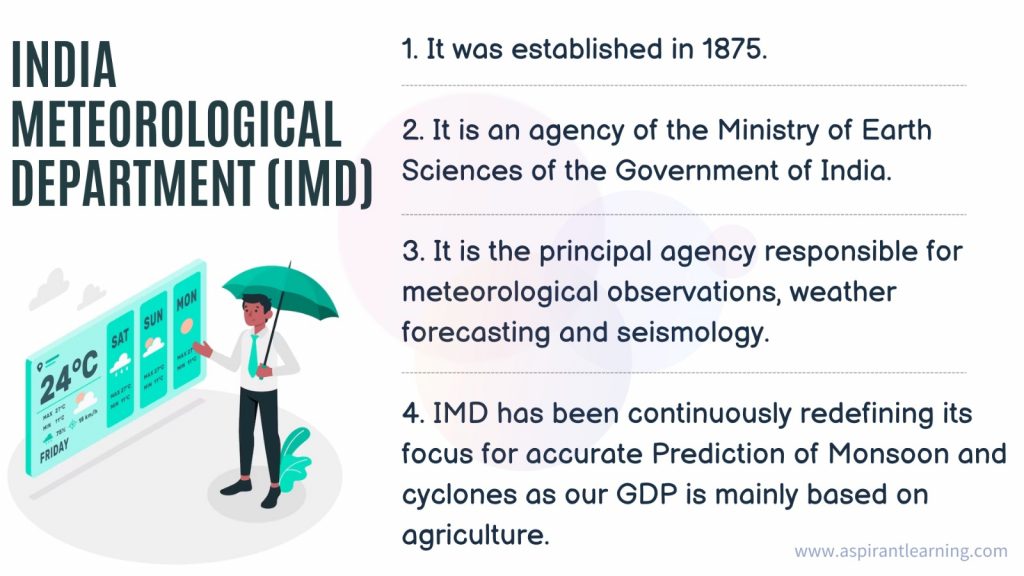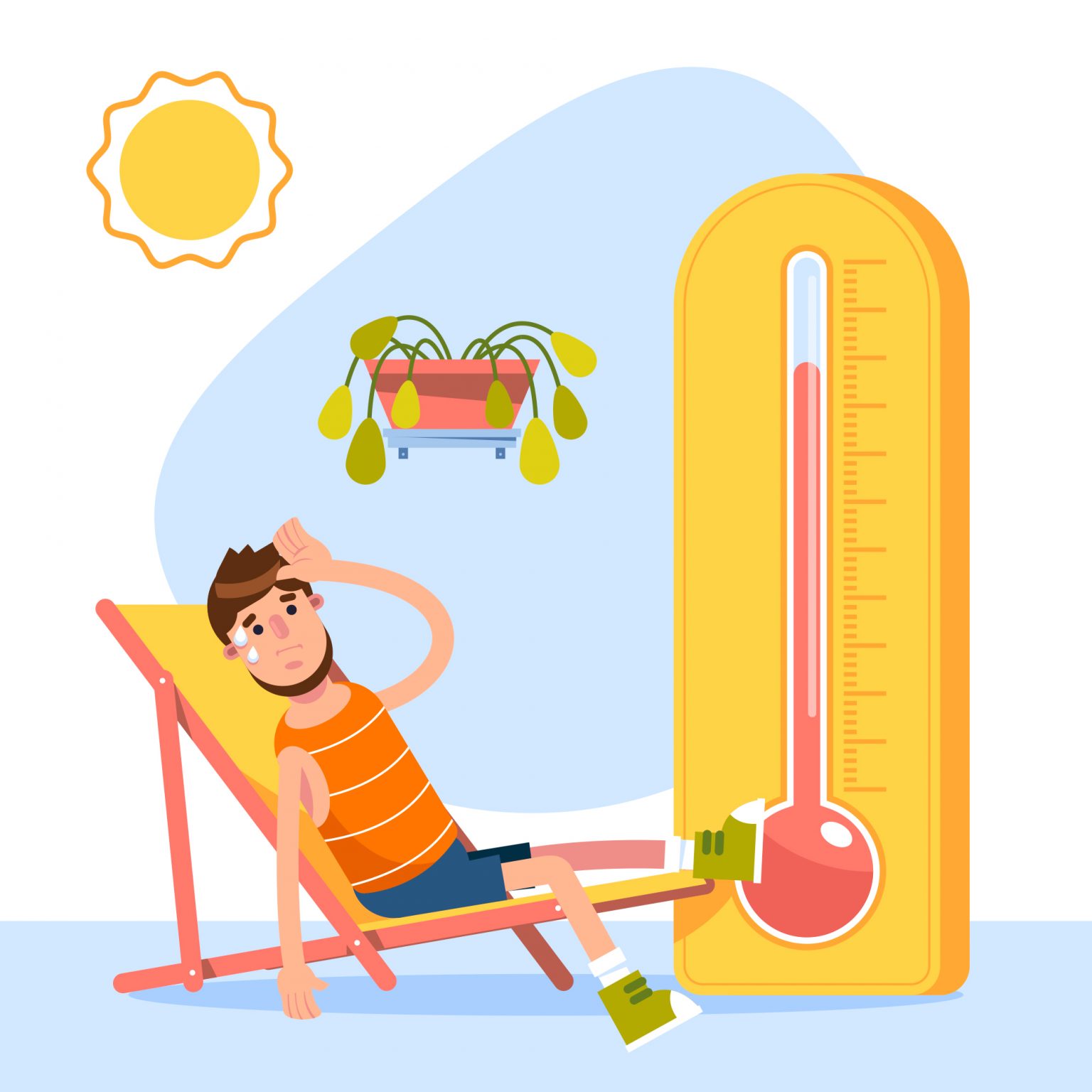News Highlights:
- The northern Arabian Sea has been warming. This land and ocean warming has enhanced the duration, frequency, and intensity of heat waves over India in the pre-monsoon season.
- Sea surface temperatures have warmed by over 1º C in the northern Arabian Sea just during March.
Heatwave:
- About:
- A heat wave, or heatwave, is a period of excessively hot weather, which may be accompanied by high humidity, especially in oceanic climate countries.
- While definitions vary, a heat wave is usually measured relative to the usual climate in the area and relative to normal temperatures for the season.
- Temperatures that people from a hotter climate consider normal can be called a heat wave in a cooler area if they are outside the normal climate pattern for that area.
- Formation of Heatwave:
- A heat wave occurs when a system of high atmospheric pressure moves into an area and lasts two or more days. In such a high-pressure system, air from the upper levels of our atmosphere is pulled toward the ground, where it becomes compressed and increases in temperature.
- This high-pressure concentration makes it difficult for other weather systems to move into the area so that a heatwave can last for several days or weeks. The longer the system stays in an area, the hotter the area becomes.
- The high-pressure system also prevents clouds from entering the region; sunlight can become punishing, heating the system even more.
- The combination of all of these factors comes together to create the exceptionally hot temperatures we call a heatwave.
- This is common in summer (in both the Northern and Southern Hemispheres) as the jet stream ‘follows the sun’.
Heat wave in India:
- Overview:
- In India, a region or locality is considered to be under the influence of a heatwave if the maximum temperature reaches or exceeds; 40 degrees Celsius in the plains. 30 degrees Celsius in hilly regions. 37 degrees Over the coastal regions.
- When the maximum temperature departure ranges between 4.5 and 6 degrees, the India Meteorological Department (IMD) declares a heatwave.
- For example, if a locality’s normal temperature should be 40 degrees, and the actual recorded temperature is 45 degrees, the locality is under a heatwave.
- A severe heatwave is declared when the recorded maximum temperature of a locality departure from normal is over 6.4 degrees.
- In India, heat waves occur from March to June, occasionally in July. The peak heatwave events were reported in May.
- As per the IMD, the most heatwave-prone states are Punjab, Haryana, Delhi, Uttar Pradesh, Bihar, Jharkhand, West Bengal, Odisha, Madhya Pradesh, Rajasthan, Gujarat, Vidarbha, and parts of Karnataka, Andhra Pradesh, Telangana, and occasionally over Tamil Nadu and Kerala.
- Reasons why India is experiencing more heat waves:
- Magnified effect of paved and concrete surfaces in urban areas and a lack of tree cover.
- Urban heat island effects can make ambient temperatures feel 3 to 4 degrees more than they are.
- Higher daily peak temperatures and longer, more intense heat waves are becoming increasingly frequent globally due to climate change.

Effects of Extreme Heat Conditions:
- Health Risk:
- One of the most significant health risks in a heatwave such as this one is heatstroke.
- Heatstroke can lead to many severe problems, including damage to the brain, heart, muscles and internal organs.
- Older people are more susceptible to heatstroke, as the body’s ability to regulate heat deteriorates with age.
- Forest:
- Hotter weather saps moisture from vegetation, turning it into dry fuel that helps fires to spread.
- Results In Forest Fire.
- Agriculture:
- It can also severely impact agriculture.
- It either causes vegetables to wilt and die or encourages the spread of plant diseases.
- It can result in Forest fires.
- Ecological:
- The severe heat waves reduce forest cover.
- Heat waves result in the deterioration of Fauna and Flora.
- Infrastructure:
- It affects infrastructure, too, by straining power grids and causing blackouts.
- It can ground planes, melt roads and cause the inside of vehicles to overheat to dangerous levels.
Heatwave mitigations:
- Public Awareness and Early Warning Systems:
- Disseminating public awareness through print, electronic and social media, providing heat-proof shelter facilities in heatwave-prone areas during summer, easing access to public drinking water, and afforestation programmes in urban and rural areas would help mitigate heat wave fatalities.
- Implementing Climate Action Plans
- The National Action Plan for Climate Change (NAPCC) should be implemented in true spirit for inclusive growth and ecological sustainability.
- Recognition of Heat Waves as a Natural Disaster
- Declaring heat waves as a natural disaster would help the state and district administration prepare a heatwave action plan at the regional level.
- Sustainable Cooling
- Passive cooling technology, a widely-used strategy to create naturally ventilated buildings, can be a vital alternative for residential and commercial buildings to address the urban heat island.
- Climate-Resilient Crops
- A dynamic understanding of risks is needed to evaluate whether the crops we have relied on so far will also be the ones to provide food and nutrition security in future.
Pic Courtesy: Freepik
Content Source: The Hindu



